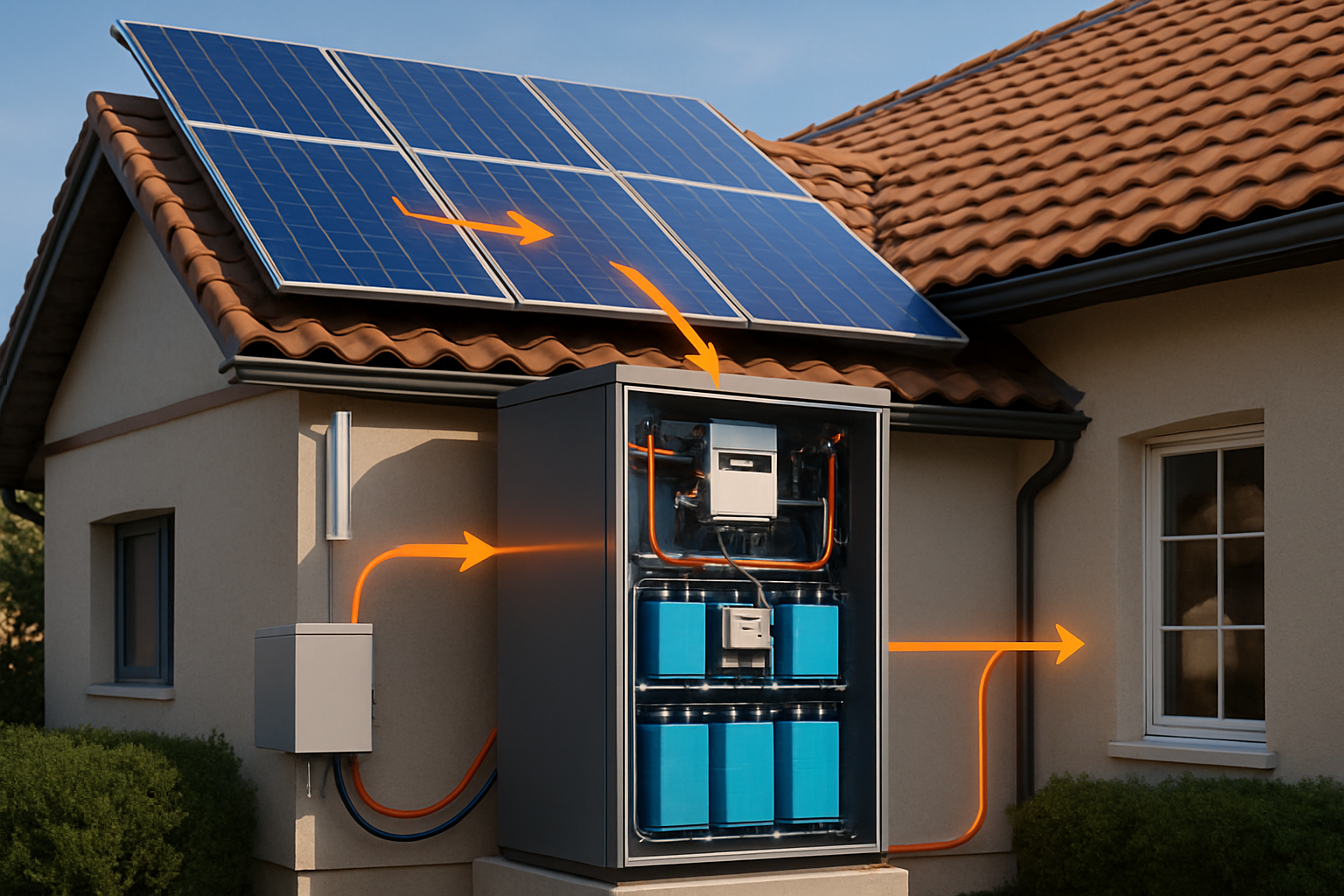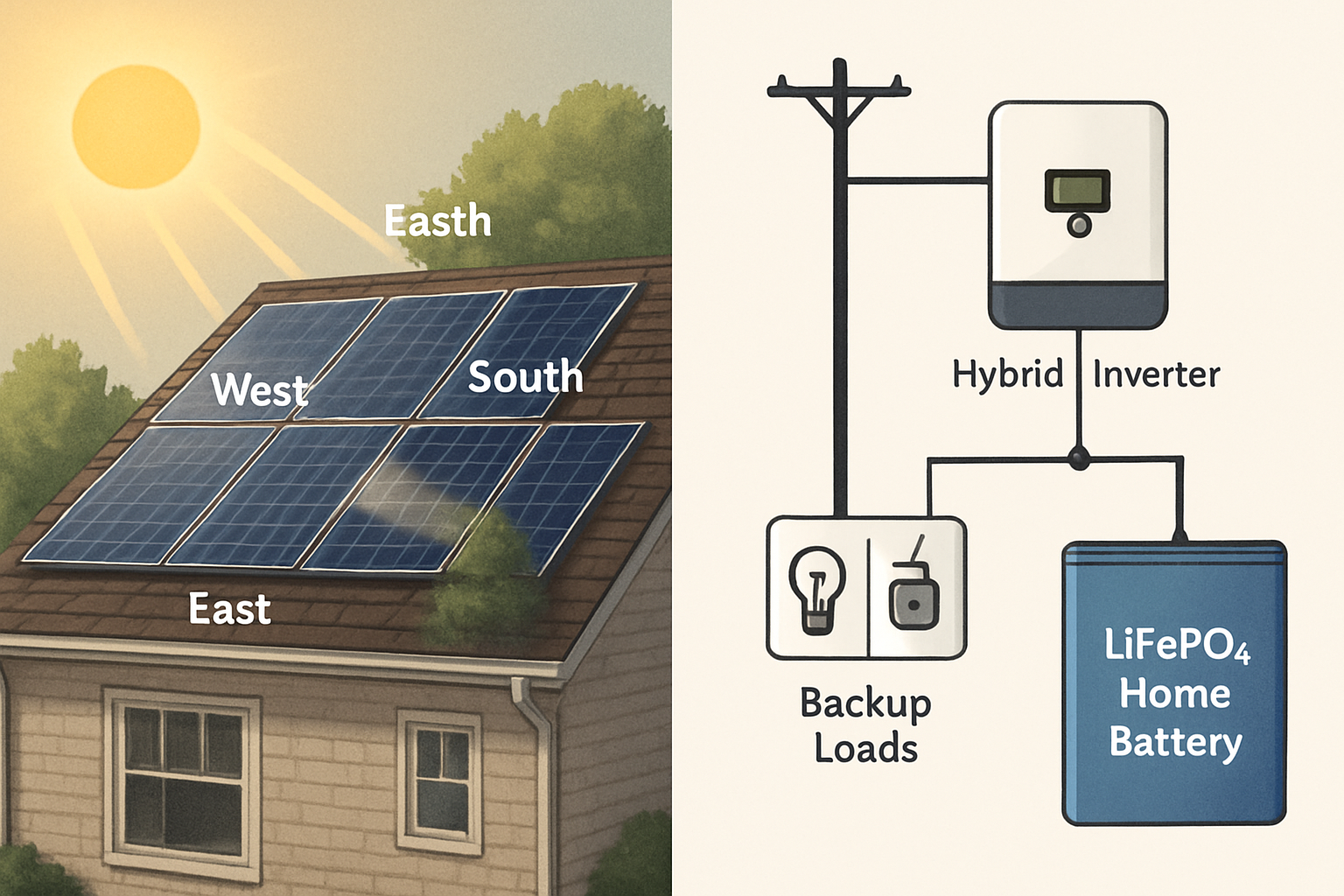Roof replacement and solar panel installation often collide on timing. The order you choose affects costs, savings, warranties, and permits. This piece gives you a clear, number-led way to decide, tailored to home solar suitability, roofing vs solar timing, and your risk tolerance.

The quick verdict
Use two fast checks to set the order.
- If your roof has less than 5–8 years of life, replace the roof first, then install solar.
- If your roof has 10+ years left, install solar now. The value of generation usually beats the future removal and reinstallation (R&R) cost.
In the 5–10 year gray zone, run the math below. Local pricing and electricity rates can swing the choice.
Why the order changes total cost
Two cost curves to balance
You trade timing costs against savings:
- R&R cost later: Removing and reinstalling panels for a reroof typically costs USD 2,000–6,000 for a 6–10 kW system in many markets, plus 5–10 days of lost solar output. Complex roofs or tile/metal can be higher.
- Lost savings if you delay solar: A 6 kW system can produce ~8,000–9,500 kWh/year. At USD 0.15–0.22/kWh retail rates, first-year bill reduction often lands near USD 1,200–2,000. Delaying a year can cost that full amount.
Retail rates have stayed elevated in many regions. Data from the U.S. Energy Information Administration indicates residential prices remain high by historical standards, supporting earlier savings from PV (EIA electricity prices).
Market signals that favor installing sooner
Recent analysis notes that while module and turbine prices rose in 2022, they began easing in 2023 as input costs fell, and PV still compares favorably against new fossil generation in many markets. Policy support also expanded in the U.S. with new tax credits for PV, storage, and grid upgrades (IEA, World Energy Investment 2023). If incentives apply to you, waiting too long risks missing peak value.
Data signals that affect timing
Costs and incentives
Key points you can use:
- IEA, World Energy Investment 2023 reports: capital costs for PV rose in 2022 but started easing in early 2023; PV still holds an advantage against new fossil in many markets. U.S. policy expanded credits for PV and storage, improving project economics.
- The Energy.gov solar topic highlights long-term PV deployment and the growing role of storage for grid fit, which supports strong long-run value from residential PV and battery systems.
- IEA, Getting Wind and Sun onto the Grid points to permitting and grid process frictions. Even small project delays can add time risk, which argues for locking in a build schedule once your roof plan is clear.
Electricity rates
Higher retail rates increase the value of early solar. EIA tracks drivers of price changes and shows how regional factors shape bills (EIA electricity prices).
Roof and structure
PV adds roughly 2–3 psf (pounds per square foot) dead load on most pitched roofs. Most modern framing handles this, but older homes or complex spans may need a structural check. A pre-solar roof inspection should flag soft decking, brittle shingles, or flashing issues. Address these items so your array can run 20–25 years without roof-driven interruptions.
Worked comparison: 6 kW asphalt shingle roof
Assumptions for a typical home (adjust to your market):
- System size: 6 kW DC; annual yield: 9,000 kWh.
- Retail electricity: USD 0.18/kWh first year.
- Roofing cost: USD 11,000 for a mid-size asphalt shingle roof replacement.
- PV R&R for reroof: USD 3,500; downtime: 7 days (lost 173 kWh ≈ USD 31).
| Option | Cash timing | Year 1 bill reduction | Extra costs | Comment |
|---|---|---|---|---|
| Replace roof first, then install solar (3–6 months apart) | Roof: USD 11,000; Solar later | USD 1,620 from Month 4 onward (partial year) | No R&R later | Good if roof has <8 years left |
| Install solar now; reroof in 4 years | Solar now; roof in Year 4 | USD 1,620 full Year 1 | R&R ~USD 3,500 in Year 4 + small downtime loss | Often wins if retail rates are high |
| Do nothing this year | No spend now | USD 0 | Lost solar savings USD ~1,620 | Usually worst financially |
In this example, installing solar now and accepting an R&R later can beat delaying solar by multiple years, especially in high-rate regions. If R&R costs in your area exceed USD 6,000 or your roof is near end-of-life, reroof first tends to be safer.
Decision rules you can apply
| Roof condition | Typical guidance | Why |
|---|---|---|
| New or <5 years old | Install solar now | Low risk of roof-driven R&R during system life |
| 5–10 years old | Inspect; if solid, install solar now; if marginal, reroof first | Compare R&R cost vs. 1–2 years of solar savings |
| 10–20+ years old, curling, leaks, soft decking | Reroof first | Protects warranties, avoids near-term R&R |
| Metal or tile roof with long service life | Install solar now with roof-specific mounts | Long-lived roofs pair well with PV |
Roof-ready installation tips that save money later
Make the roof solar-friendly
- Ask the roofer for high-temp underlayment at array areas and upgraded flashing around penetrations.
- Plan “walkway” rows for maintenance and fire code setbacks. Clear plumbing vents and flues from prime solar zones.
- Use corrosion-resistant mounts and rails; for metal roofs, use roof-specific clamps that avoid penetrations where possible.
Electrical and structural checks
- Confirm the main panel bus rating and available backfeed capacity. Upgrade if you plan a larger array or future EV loads.
- Verify rafter spacing and condition. PV load is modest, but repairs are cheaper now than after the array goes up.
Think storage and tariffs
- Time-of-use rates make a home battery valuable. Pairing PV with a LiFePO4 storage system can shift solar energy to evenings and improve self-consumption. The grid modeling in U.S. studies shows growing roles for storage in high-PV futures (Energy.gov solar topic).
Permitting, timelines, and risk
Permitting and grid interconnection can add time. Broader system studies note that permitting has become a concern for investors and planners, which underscores the value of a clean, complete application package (IEA, Getting Wind and Sun onto the Grid). For a home project, aim to:
- Align roof work and solar design early, so drawings, permits, and schedules match.
- Book the roofer and the solar crew within the same 2–4 week window if you choose roof-first. This limits exposure to price changes.
Warranties, contracts, and compliance
- Roof warranty: Have the roofer confirm mount compatibility in writing. Many roofing warranties remain valid with code-compliant solar mounts installed by licensed contractors.
- PV warranty: Panel and inverter warranties are unaffected by roof work if R&R is performed by qualified technicians. Keep R&R documentation.
- Insurance: Notify your insurer of both the new roof and the PV system.
Note: This content is for information only and is not legal, tax, or insurance advice.
FAQs that influence the order
- Will prices be lower later? Recent analysis shows PV costs moved up in 2022 then eased in 2023 as supply chains improved (IEA, World Energy Investment 2023). Policy support also matters. Delaying can forfeit near-term bill savings.
- Is shade a reason to wait? No. Shade is a design issue. Module-level power electronics can limit shade losses. Storage can lift evening self-consumption.
- How about global decarbonization targets? While large-scale plans set context, your decision is local. Still, cost and deployment trends reported by agencies like IRENA and IEA provide confidence that PV remains a strong long-run asset.
A simple decision sprint
- Get a roof inspection with photos and a written remaining-life estimate.
- Request two solar quotes: base PV, and PV+R&R pricing for a future reroof.
- Use your utility rate plan to value first-year savings and compare to R&R cost.
- Confirm warranties and schedule. Pick the sequence that minimizes lifetime cost and downtime risk.
What this adds up to
There is no single right order for every home. If your roof is strong for 10+ years, installing solar now usually saves more than it costs to remove and reinstall panels later. If your roof is aging or marginal, replace it first and design a solar-ready roof with proper flashing, layout, and electrical capacity. Market data from IEA, Energy.gov, EIA, and IRENA signals durable value for rooftop PV and growing synergy with storage. Make the roof and the array work as a system, and you unlock stable, long-run savings.





Leave a comment
All comments are moderated before being published.
This site is protected by hCaptcha and the hCaptcha Privacy Policy and Terms of Service apply.